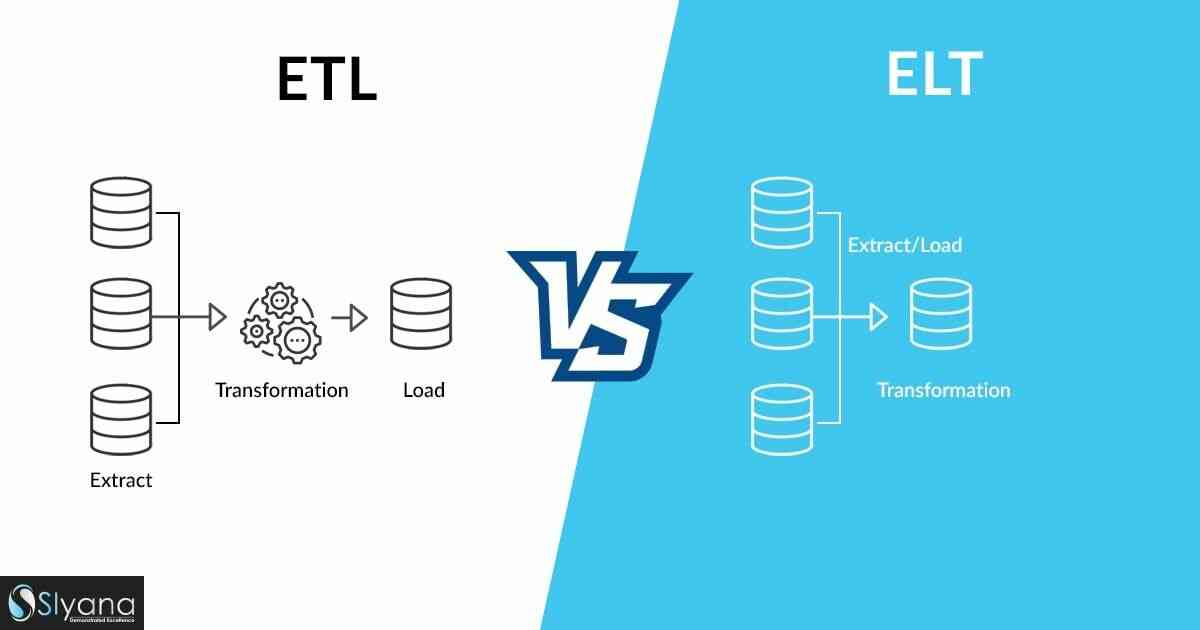ETL Vs. ELT: What's Best for Your Business?

With Billions of Data to be collected and processed, a right Data Processing strategy is vital for Business's success
Data plays a critical role in almost every part of a business. And as more and more organizations realize the high value of data, the data warehousing technologies are also evolving to support this requirement. Data Warehouses make the Data valuable by gathering it from all the possible sources to organize and centralize it. This process is also referred to as Data Transformation & Integration.
ETL (extract, transform, load) has been the traditional approach for data warehousing and analytics. This process is of prominent use for Data Integration for on-premise servers. But the shift towards cost-effective, cloud Data Warehouses has also accelerated the change from ETL to ELT (Extract, Load, Transform) approach for managing analytical data.
Data Transformation & Integration
Irrespective of which process is used for data integration/transformation, it will consist of three primary steps:
Extract: Extracting Data means pulling the data from various sources including but not limited to database, flat files, excel, csv, blob storage, EDI and many more.
Transform: Transformation of Data is modifying and improving the collected data into a structured meaningful format. This makes it possible to integrate Data with the targeted data system in conformity with the Data already present in that system.
Load: Loading is the process of transferring and depositing the information into a data storage system.
ETL Vs. ELT- The Difference in Approach
Though ETL and ELT have a lot in common, the main difference between the two lies in where the Data transformation occurs and how much Data is retained in the working data warehouse.
In the ETL process, Data is first extracted from the sources, then transformed into prescribed data models before loading into the data warehouse. In this process, the data goes into a temporary staging area for transformation before integrating into the data warehouse.
ETL architecture is somewhat monolithic and is majorly used for connecting with schema-based data sources. Legacy ETL tools have almost negligible ability to process data that is flowing at high velocity or has high veracity. They also require detailed planning, supervision, & coding by data developers and engineers. Some modern ETL solutions are comparatively much faster and can instantly extract, transform, and load the data from diverse sources without needing any expert intervention.
In contrast to ETL, in ELT, the data cleaning, enrichment, and transformation happen after the loading process. ELT process leverages the Data Warehouse to do basic transformations and thus does not require data staging. Cloud-based Data Warehouses make it possible to create ELT pipelines by offering near-endless storage capabilities and scalable processing capabilities.
ELT offers much more agility & flexibility. It gives the ability to store a large amount of data while enabling users to selectively transform the data in different ways on demand to produce various metrics, forecasts, and reports.
ETL Vs. ELT- Use Cases
ETL offers a unique advantage when a task requires speedy analysis. Since the Data is already transformed into a structured format, it supports faster, more efficient, and more stable data analysis.
ETL is also beneficial in maintaining data compliance. Prevalent regulations such as GDPR, CCPA, or HIPAA have a firm requirement for removing or encrypting particular data fields to protect users' privacy. ETL is the most secure method to perform such transformations as the Data transformation happens before loading into the Data Warehouse. This ensures that none of the non-compliant Data is accessible to any users, including the system admins.
ELT, on the other hand, offers increased flexibility and ease of storing new, unstructured data. ELT makes it possible to store and quickly access any information without transforming or structuring it in a predefined format.
ELT is suitable for managing vast volumes of both structured and unstructured data. Cloud-based ELT solutions help users process large volumes of data quickly. It is also a preferred option for an organization that needs immediate data access. Since transformation happens at the last step, ELT prioritizes the loading of data into the data repository. This also makes it possible to reuse untransformed data for different purposes while also leaving a record for auditing and compliance purposes.
Conclusion
Data processing is a vital operation for an organization and has to be chosen carefully. While ELT is the most preferred option for the modern analytics workload, traditional ETL does offer significant advantages to organizations with limited analytical capabilities.

